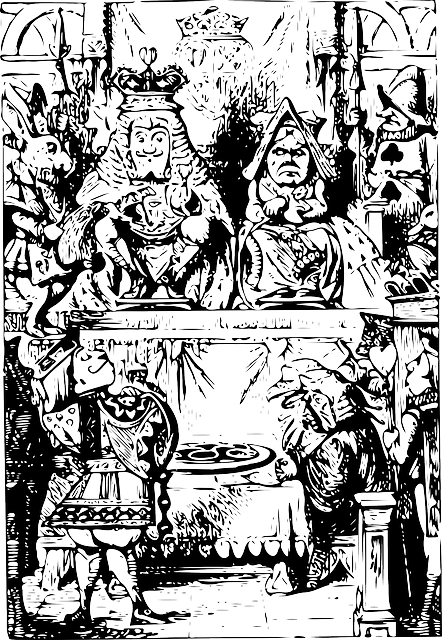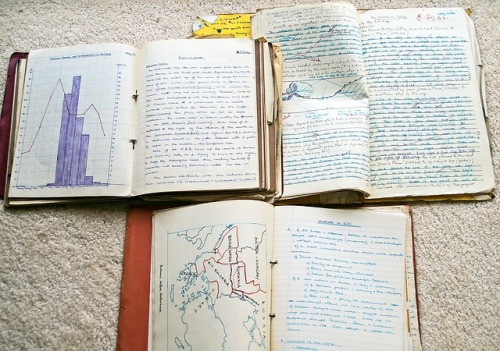Can you publish your NaNo? As it will stand on December first–NO. Absolutely not. I can tell you that unequivocally. Sorry. But do not despair—if you think it’s a pretty decently written story with some lively characters and good ideas, you might just be able to make it good enough to pitch to an agent or publisher or to self-publish. But I’ll tell you a hard but factual truth—nobody but your mother wants to read anything you’ve written if it’s boring or written poorly. So if you want to consider publishing, you actually have to put all thoughts of publishing aside for the time being and edit that sucker to within an inch of its life. And then it may just become good enough to publish.
If you’ve been doing all the things I mentioned—pushing to get up to or beyond those fifty thousand words and cram the whole accomplishment into a month—it’s likely that the story as it exists right now is bloated and wordy and unwieldy. And in particular, if this is the first thing you’ve ever written, it’s unlikely to be even remotely publishable. Perhaps not ever. Trust me, though, we’ve all started at that point, and the more you practice, the better you will get at writing excellent stories. So don’t despair here either; just keep writing. But on the other hand, if you look at your novella and think, “There’s something really potentially good here,” you may have something to work with, and you can probably even make it quite good. How should you do it?
EDIT AND EDIT AND EDIT AGAIN
Ignore the book for a while
Before you even think about publishing, of course you have to edit. But even before that, it’s strongly advised that you put your book away and not even look at it or think about it for at least a few weeks, or even longer, if possible. This will give you some distance, so that when you come back to it, you won’t be swimming right in the middle of it. You’ll have had time to climb up the banks, dry off, travel down the road a while, do other things, forget what the book looked like, and get less attached. Then you can look at it more objectively—well, as objectively as you’ll ever be able to, given that it’s your baby.
After living with your story for so long, you will have fallen in love with your own words and your own story, and for quite some time, you will be incapable of seeing its flaws. You are too close to it.
That’s why, among many post-NaNo editing groups, there is a site called NaNoEdMo (from “National Novel Editing Month”). This site, although it’s not affiliated directly with NaNoWriMo, builds upon and furthers the work of NaNo writers. It stages a fifty-hour editing spree in the month of March, during which you can edit the NaNo you wrote the previous November. But the people who founded NaNoEdMo wisely chose March as the month of editing, because it gives NaNo writers three full months to be away from their book. The writers can also get over the “I’m so colossally sick of this story” feeling that they probably have at the end of November, and they can view their NaNo with more objective eyes and fresh interest.
Put it away. Ignore it. Pretend it never existed. You may still be in the throes of first love, but cut the ties. Later, when the book is perfect, you will realize what a wise move this is.
It needs copyediting!
This is as true for the work of a skilled multi-book novelist as it is for a first-time writer. No story is ever going to be perfect when it is first finished. When you go back to read it again, you will probably cringe at the typos and the inadvertent repetitions and, more than occasionally, the bad grammar. And that’s just the words and writing mechanics; we’ll deal with the actual characters and plot later, because there will be plenty to work on there too.
At the copyediting stage, this is when you’ll be able to go through and find those typos and grammar mistakes and those sentences that contain eighteen words when they really only need seven. Here’s where you will grumble mightily at yourself for adding all those superfluous words so you could reach your fifty-thousand-word total. Sorry. (But you know you’ll do exactly the same thing again next year. Like I said, it just takes a little time away from a thing for it to feel fresh and exciting and worth doing again.) Now you must pare away every unnecessary word, every word that does not push the story forward in some way. Go over that manuscript sentence by sentence, word by word, punctuation mark by punctuation mark. Get that grammar, spelling, and punctuation as perfect as you can make it.
But remember that you’re not just editing so you can cut things for the sake of cutting things. You are editing to try to make the book better. So this is also where you can add. If you think of a much better way of saying something, delete the original sentence and put the better sentence in. If you skimmed something that really needed discussion, add that extra discussion too. And don’t worry that these are new words to edit—you’ll be making at least two more passes through your whole manuscript, editing it again. (Scared yet?)
If you want to publish some day, this is the work of a publishable writer. Do it.
RUTHLESS PLOT AND CHARACTER ANALYSIS
This work should make you even more scared; sorry again. The grammar and typo editing was just to give you a clean field to work on. This is the even deeper meat of editing. This is where it gets bloody.
Before you go on to these next stages, you need to adopt a mantra: For the good of the story. If necessary, write this mantra backwards on your forehead in blood-red letters, like a tattoo, so you read it every time you look in a mirror. The good of the story itself comes first now, no matter what your feelings are in the matter.
Ditch characters if necessary
Have you heard of a “Mary Sue?” That’s a name people have coined to refer to characters who are usually thinly disguised versions of the author him/herself and who are inserted into the author’s own story because, say, the main character is just so dreamy that they yearn to interact with him or her personally and this is the only way they can do it. Or say that you insert a character who doesn’t really push the plot forward but who is just there, again, to experience the story personally or to gush over another character. This is a character who allows the author to personally intrude into the story in a direct, usually emotional way. If you’ve got a “Mary Sue” type of character in there, he or she has got to go.
At this stage, you have to be as emotionally uninvolved with your story and characters as you can possibly manage. This is because you will need to be capable of recognizing when a character simply doesn’t help the story in any way. And when you recognize that, you need to be able to say, “Right, then, that character is gone as of now.”
I wrote a gigantic fantasy novel {mumble mumble} years ago. There was a female character who I created out of thin air to be a love interest for one of the two main male characters. She entered the story before it was a third of the way through, and she was there to the very end. (So she was probably there for almost 600 pages.) But a few years later, when I went back to do a major edit of the story, I couldn’t justify why she was there. She contributed nothing to the plot; even the supposed love between her and the male character seemed completely contrived and fake. She was nice enough, but she did nothing in the story that couldn’t be more plausibly done by several other essential characters. (And the male character himself was too embroiled in the actual events in the story; he didn’t actually need a love interest.) So as I typed the story into digital form for the first time and edited as I went, I rewrote the story without her in it.
And guess what! The story was much better, and nobody missed her, the poor dear. There was no gap that she had filled, and she left no gap when she was gone.
For the good of the story, if you can see that a character is absolutely unnecessary to the story, you must get rid of that character. And—as we move into the last element of the editing—if you see that you actually have to sacrifice a character for the plot to be the best that it can possibly be—you must be ready to do that too.
Change the plot if necessary
This is probably the toughest change of all for any writer to make. You wrote all the events in your story because those were the events that really happened. In your mind, those events are as fixed and permanent as any event that took place in the history of the real world. Those events “really happened,” and if they hadn’t belonged in the story, you wouldn’t have put them there.
But this is the difference between the real world and a fictional world. You write fiction with a certain type of structure, to create a certain type of arc. That arc usually involves rising action (involving some kind of struggle either with a big problem or with an actual oppositional antagonist) that finally comes to a climax or crescendo, where the problem is solved, the villain is defeated, and the primary purpose of the story is fulfilled. Then the action falls swiftly as things get wound up and the story ends.
If some event you’ve included doesn’t actually do anything to push the story upward toward that crescendo near the end, it’s possible (likely even probably) that that event doesn’t belong in the story. You may feel you need it, say, to build the camaraderie in your roving group of vagabonds, both so they get to know each other and the group gets some cohesion and so your reader can get to know them. But check whether this can be accomplished in other subtle ways in chapters that really do simultaneously push the story forward. Remember when I showed how you could give descriptions of characters in the middle of the action rather than pausing the action to write a block of text listing their physical characteristics and personality quirks? You can probably do the same thing here too.
Try to decide why you wanted this event or chapter in the book, if it wasn’t going to do anything to further the plot. If there’s really no valid reason the event should be there, aside from “I like it,” it might be a “Mary Sue” type of event, or it might be something you wrote well but which still didn’t help the plot. Neither reason is a good reason to keep it if it’s not pulling its own weight.
And remember that character from a few days ago who recognized that the only way to save the world was to sacrifice himself? What if you love that character too much to kill him off?
Kill him off anyway. If that is the best and only way to resolve the plot—do it. For the good of the story. Remember, remember, remember that it’s the success of the story as a good story that is the only important thing now. In fact, if the greatest and best way to make your story perfect (and perhaps to resolve some thorny plot issues later in the book that you just couldn’t think of any other plausible way to resolve) is to kill off your main character in chapter two—do it.
I’ll give you another example from my huge fantasy novel. One reason I sat on it for about six years—and in fact the reason that only two-thirds of it had ever been entered from the original typed paper manuscript onto disk in digital form—was that I finally realized that an important character who had died about four-fifths into the book really had to die several chapters earlier. If he died when I originally had the event happen, there were several problems that I would have to explain or think of ways of getting around (violations of magic laws inherent to that world, primarily), and any explanation I came up with was so clearly contrived and contradictory and convoluted that I just had to face it: if I went with the convoluted justifications of this big exception and kept this guy’s death in the later spot in the story, the story would work badly.
So this guy had to die sooner, which meant that there would have to be quite a bit of change to the plot and some of the timelines in the rest of the book. But there simply was no other way to get past all the problems. I’ve finally spent the last year doing the shifting of events and the rewriting of all the scenes that this character could no longer play a role in. It was a lot of work, and I can’t deny that. But the plot works, and it works so much better than before!
When you edit your NaNo or, frankly, any book you write, you will always have to edit, because nothing is ever perfect. You will start fairly simply, first taking a break from the story and then going over the words and expressions; then you will work up to the harder things, getting rid of or changing characters; and then you will get to the really heavy stuff, changing your actual plot and the events in the book, if it’s necessary to make the book better. You don’t have to do any of this if you’d just rather keep the story as a personal treat for yourself and maybe some friends. But if for a moment you think you might want to actually publish the story you’ve written—you must edit, and you must do it thoroughly. And you will not regret it when you see the final beautiful result.
























